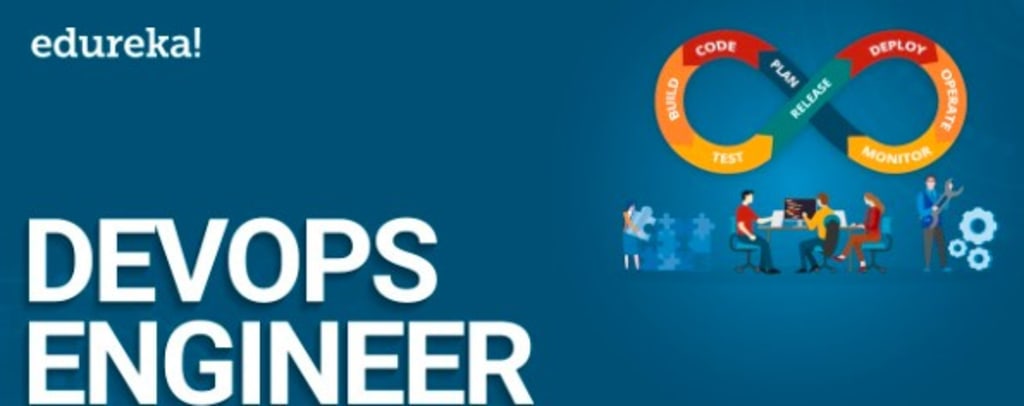What is the role of configuration management in DevOps?
Configuration management is a critical aspect of DevOps as it promotes consistency, reliability, scalability, and repeatability in software development and deployment processes.

Configuration management in DevOps refers to the practice of managing and controlling the configuration of software systems, infrastructure, and related components throughout their lifecycle. It involves maintaining consistency, version control, and automation of configurations to ensure reliable and reproducible deployments.
In DevOps, configuration management focuses on maintaining the desired state of software systems and infrastructure, enabling organizations to effectively manage complex environments, deployments, and changes. It involves defining configurations as code, using version control systems to track changes, and utilizing automation tools to deploy and manage configurations consistently across different environments. By obtaining DevOps Engineer Course, you can advance your career in DevOps. With this course, you can demonstrate your expertise in uppet, Nagios, Chef, Docker, Git & Jenkins. It includes training on Linux, Python, Docker, AWS DevOps, many more fundamental concepts, and many more critical concepts among others.
By implementing configuration management practices, organizations can achieve consistency, repeatability, scalability, and reliability in their software development and deployment processes. It enables efficient management of infrastructure, reduces manual effort, facilitates collaboration, and enhances overall control and visibility of configurations.
Key aspects of configuration management in DevOps include:
Infrastructure as Code (IaC): Configuration management embraces the concept of treating infrastructure configurations as code. It involves defining infrastructure components, dependencies, and settings in a declarative or imperative manner using configuration files or scripts. This approach allows for versioning, collaboration, and automation of infrastructure provisioning and management.
Version control: Configuration management employs version control systems, such as Git or Subversion, to track changes made to configurations and related files. Version control enables teams to manage different versions, track modifications, and roll back changes if necessary. It provides visibility, accountability, and facilitates collaboration among team members.
Automation and orchestration: Configuration management tools, like Ansible, Chef, or Puppet, automate the deployment and management of configurations. They enable the provisioning and configuration of infrastructure resources, installation and configuration of software components, and enforcement of desired state configurations. Automation ensures consistency, reduces manual errors, and speeds up the deployment process.
Continuous Configuration Management: In DevOps, configuration management is integrated into the continuous integration and continuous deployment (CI/CD) pipeline. Changes to configurations are validated, tested, and deployed alongside application code. This allows for rapid and reliable deployments, maintaining consistency across different environments and reducing deployment-related issues.
Monitoring and remediation: Configuration management includes monitoring the state of configurations and detecting any deviations or drift from the desired state. Continuous monitoring helps identify discrepancies, ensure compliance with standards or policies, and trigger remediation actions to bring configurations back to the desired state.
Collaboration and traceability: Configuration management fosters collaboration among team members by providing a central repository for code, configurations, and documentation. This allows multiple developers to work concurrently, track changes, and merge their modifications seamlessly. It also enables traceability, making it easier to identify the source of issues or bugs and track their resolution.
Continuous Integration and Continuous Deployment (CI/CD): Configuration management integrates with CI/CD pipelines, enabling automated builds, tests, and deployments. By defining configurations as code and using tools like Jenkins or GitLab CI/CD, organizations can automate the entire software delivery process, reducing manual effort, and ensuring consistent and reliable deployments.
Scalability and resilience: With configuration management, scaling software systems becomes more manageable. By defining scalable configurations and utilizing infrastructure automation, organizations can easily provision and manage additional resources as needed. Configuration management also helps maintain system resilience by allowing quick recovery from failures through reproducible deployments and rollback mechanisms.
Change management: Configuration management aids in change management processes by providing visibility and control over modifications. It helps assess the impact of proposed changes, track changes made to configurations, and implement change approval workflows. This ensures that changes are properly evaluated, tested, and deployed with minimal disruption to the system.
Risk reduction: Configuration management mitigates risks associated with software deployments and updates. By using version control, automation, and standardized deployment processes, it minimizes the chances of human errors, configuration drift, or incompatible software versions. This leads to increased stability, reliability, and overall risk reduction in software development and deployment.
In summary, configuration management is a vital component of DevOps, ensuring consistency, automation, scalability, and reliability throughout the software development and deployment lifecycle. It facilitates collaboration, supports CI/CD practices, enhances traceability, and reduces risks, contributing to more efficient and effective software delivery.
About the Creator
Enjoyed the story? Support the Creator.
Subscribe for free to receive all their stories in your feed. You could also pledge your support or give them a one-off tip, letting them know you appreciate their work.





Comments
There are no comments for this story
Be the first to respond and start the conversation.